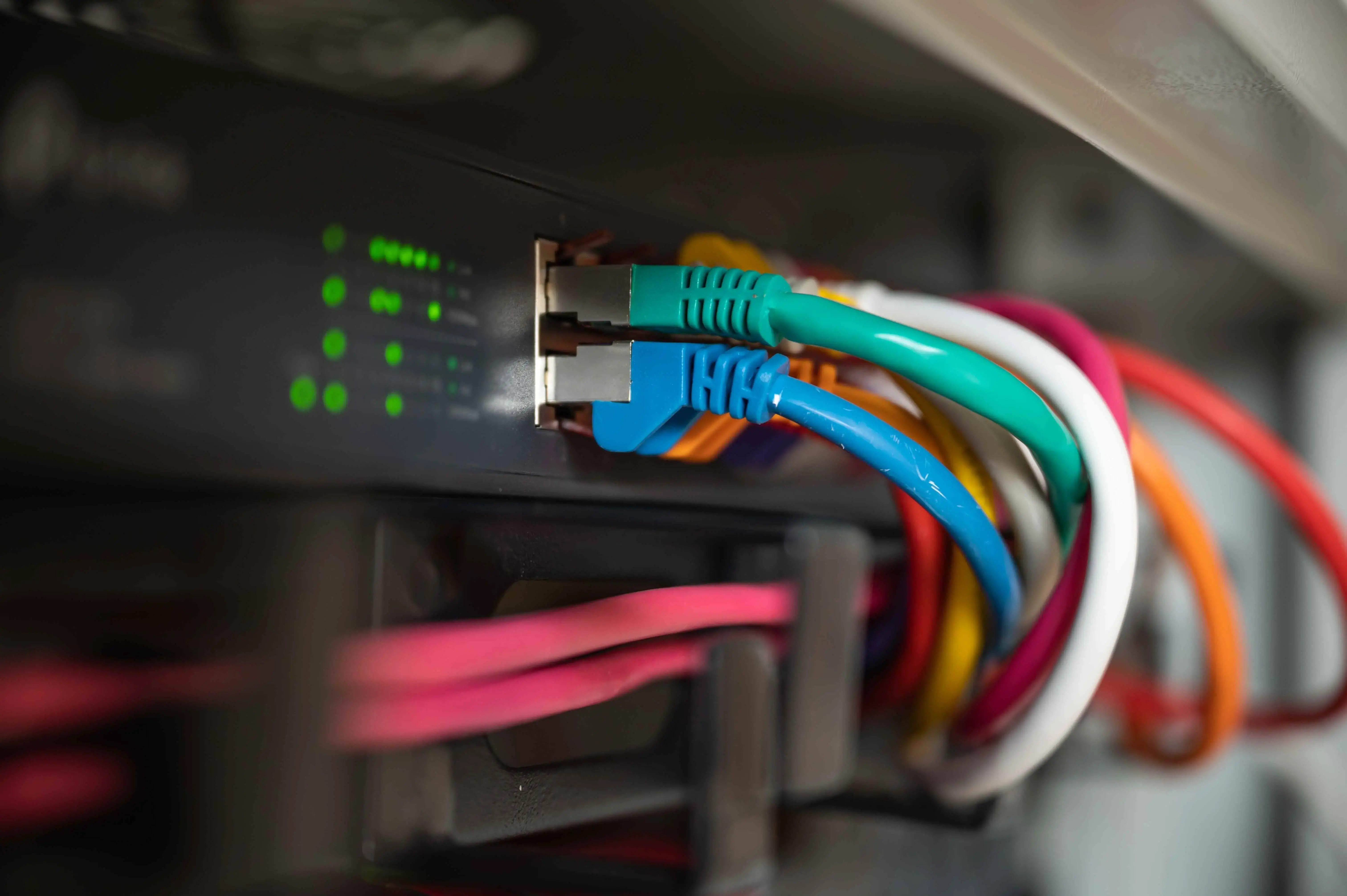Have you ever wondered why websites load so swiftly and seamlessly when you are browsing the internet? It is not solely your internet connection at play; there's a sophisticated network of servers and routing protocols working behind the scenes to ensure that web content reaches your device with optimal speed and efficiency.
Anycast is a technology that contributes to this seamless experience. It is a routing method that directs traffic to the closest server within a cluster of identical servers.
In this article, we will discuss its principles, applications, and why it's crucial in modern networking, simplifying complexity, enhancing performance, and strengthening network infrastructure.
Traditional Unicast vs Anycast Routing
Unicast routing is the conventional method for transmitting data packets in IP networks, associating each IP address with a single unique endpoint. When data is sent to a unicast IP address, the routing infrastructure routes it exclusively to that specific endpoint. However, while unicast routing forms the foundation of the internet, it has limitations.
In response to these limitations, Anycast routing emerges as an innovative alternative, allowing multiple endpoints to share the same IP address. This approach enhances efficiency and resilience in network operations.
Comparison of Routing Methods: Traditional Unicast Routing vs. Anycast Routing
| Aspect | Traditional Unicast Routing | Anycast Routing |
|---|---|---|
| Routing Method | Each IP address corresponds to a unique endpoint. | Multiple endpoints share a single IP address. |
| Efficiency and Redundancy | Limited redundancy, as traffic always goes to the same endpoint. | Enhanced redundancy, as traffic is routed to the closest available endpoint, improving load balancing and fault tolerance. |
| Latency and Performance | May lead to higher latency, as there's no automatic routing to the closest server. | Low latency, as traffic is directed to the nearest server, improving user experience and response times. |
| Scalability | Limited scalability for services requiring global redundancy. | Highly scalable, especially for services that need global presence and resilience. |
| Complexity and Network Management | Requires management of multiple unique IP addresses. | Simplifies network management by consolidating services under a single IP address. |
| Use Cases | Common in basic network setups, but less suitable for highly available and distributed services. | Ideal for services demanding high availability and geographic distribution, such as content delivery networks (CDNs) and critical network services. |
While unicast routing remains fundamental to networking, Anycast routing has emerged as a powerful alternative, offering scalability, redundancy, load balancing, and latency optimization benefits that address the limitations of traditional unicast routing.
What is Anycast Routing?
Anycast routing is a network addressing and routing technique where a single IP address is simultaneously assigned to multiple endpoints distributed across a network.
This method leverages routing protocols like the Border Gateway Protocol (BGP), to direct incoming data packets to the nearest endpoint based on routing metrics and network conditions. Anycast improves performance, redundancy, and load distribution in network services.
How Anycast Routing Works
Multiple Endpoints: In an anycast configuration, multiple instances of the same service or endpoint exist, each located at a distinct geographic location or network node. These endpoints are assigned the same IP address, creating an anycast group.
BGP Configuration: The network administrators set up the anycast IP address in BGP. BGP is a core internet routing protocol responsible for distributing routing information across networks. The BGP announcements inform routers on the internet about the existence of the anycast IP address.
Routing Decisions: When a client device connects to anycast IP address, the network routers rely on BGP and various routing metrics to determine the optimal endpoint for serving the request. These metrics include network path length, link quality, or other criteria.
Nearest Endpoint Selection: The router makes a routing decision based on these metrics, directing the data packet to the nearest available endpoint in the anycast group. This proximity-based routing minimizes latency and optimizes performance.
Load Balancing: Anycast can also provide load balancing. If multiple endpoints are equally suitable for handling a request, the network routers distribute incoming traffic evenly among these endpoints to prevent overloading a single one.
Redundancy and Failover: Anycast offers built-in redundancy and failover capabilities. If one endpoint becomes unavailable, BGP can be configured to reroute traffic to the next nearest available endpoint, ensuring service availability even in the event of failures.
Advantages of Using Anycast Routing

1. Lower Latency
Anycast routing significantly reduces latency by directing incoming traffic to the nearest available endpoint in an anycast group. This proximity-based routing minimizes the physical distance data packets need to travel, leading to faster response times for end-users.
Content Delivery Networks (CDNs) use anycast to serve web content from multiple strategically located servers, Akamai a global CDN provider employs anycast to deliver content from servers close to their geographic location, reducing user latency and speeding up website loading.
2. Load Distribution
Anycast facilitates efficient load distribution by automatically sending incoming traffic to the least congested or nearest endpoint within the anycast group. This load balancing optimizes resource utilization and prevents overloading of a single server or location.
Large-scale web services, such as Google's public DNS resolver (8.8.8.8), use anycast to distribute DNS queries to multiple geographically dispersed servers. This eases the load on individual servers and boosts the DNS service's performance and availability.
3. Redundancy and Failover
Anycast offers built-in redundancy and failover. When an endpoint in an anycast group is unavailable due to hardware issues or network problems, BGP routing automatically redirects traffic to the nearest available endpoint, ensuring continuous service and high availability.
Distributed Denial of Service (DDoS) mitigation services employ anycast to distribute and absorb DDoS attack traffic across multiple scrubbing centers. If one center becomes overwhelmed, traffic is rerouted to other centers, allowing for uninterrupted DDoS protection.
4. Improved Service Availability
Anycast enhances service availability by enabling multiple geographically distributed servers to respond to the same IP address. This approach reduces the risk of a single point of failure, as the failure of one endpoint does not disrupt the entire service.
Major cloud providers like Amazon Web Services (AWS) use Anycast for their DNS resolution services. This guarantees high availability of DNS resolution, ensuring that even if a data center experiences issues, DNS resolution remains accessible from other locations.
5. Simplified Network Architecture
Anycast simplifies network architecture by allowing multiple servers to share a single IP address. This eliminates the need for complex load balancers and traffic management devices, streamlining the network infrastructure.
Large-scale global companies, like Netflix, use Anycast to deliver content to their users. By simplifying their network architecture with Anycast, they can efficiently manage the distribution of video content to millions of viewers while improving the user experience.
Implementing Anycast Routing

Network Topology Considerations
Before implementing Anycast routing, it is crucial to design a network topology that supports the distribution of traffic to multiple endpoints. Here are some key considerations for the network topology.
Geographic Distribution: Anycast endpoints should be strategically placed in different geographic locations. This ensures that incoming traffic can be directed to the nearest endpoint, reducing latency and optimizing performance.
Redundancy: To achieve high availability, it is important to have redundant anycast endpoints in each location. Redundancy ensures that if one endpoint becomes unavailable, traffic can be rerouted to an operational one.
Network Connectivity: Ensure that all anycast endpoints are connected to the internet or the network infrastructure. They should have appropriate routing capabilities to announce the anycast IP address using a routing protocol like BGP.
BGP Configuration: Each endpoint should be configured to announce the same anycast IP address through BGP. Additionally, BGP should be set up to handle failover and rerouting in case an endpoint becomes unavailable.
Configuration Steps
Here are the steps to implement Anycast Routing in a network:
Choose an IP address that you want to use as the anycast address for your service. This IP address will be shared among multiple endpoints.
Deploy multiple instances of the service or endpoint across different locations or devices. Each endpoint will use the same anycast IP address.
Configure the endpoints to use BGP to announce the anycast IP address to the network. BGP allows routers to learn about the existence of the anycast IP address and directs incoming traffic to the nearest endpoint.
Implement redundancy by having backup endpoints in each location. Configure BGP with appropriate routing policies to enable automatic failover if one endpoint becomes unavailable. This ensures service continuity.
If you want to distribute incoming traffic evenly among multiple endpoints, you can set up load-balancing mechanisms at the endpoints or use dedicated load balancers. This step helps optimize resource utilization.
Implement monitoring tools and procedures to continuously monitor the health and performance of each anycast endpoint. Regularly update BGP configurations and network policies as needed.
Before deploying Anycast in a production environment, conduct thorough testing to ensure that traffic is correctly routed to the nearest endpoints and that failover mechanisms work as expected.
Potential Challenges and Limitations of Anycast Routing
1. Troubleshooting Complexity
Anycast can pose troubleshooting challenges as multiple endpoints share the same IP address. This complexity can make it difficult to identify the source of a problem.
To manage this, careful monitoring and centralized logging, along with clear documentation and communication protocols, are crucial. These measures help track endpoint performance and health while expediting issue responses.
2. Incomplete or Asymmetric Routing
Anycast depends on routing protocols for directing traffic to the closest endpoint, but incomplete or asymmetric routing can occur due to delayed updates in routing tables.
In response, network administrators should establish contingency plans, including using BGP communities to influence routing decisions, monitoring BGP announcements, and collaborating with upstream providers to maintain consistent network routing.
3. Overloading of Endpoints
Anycast routing is designed to distribute traffic across multiple endpoints, but under certain conditions, such as a sudden surge in incoming requests or misconfigurations, all traffic may be directed to a single endpoint, overloading it.
To counter this, establish load balancing measures at anycast endpoints or deploy dedicated load balancers to ensure that traffic is evenly distributed. Additionally set up rate limiting and traffic shaping to prevent traffic spikes from overwhelming individual endpoints.
4. Route Flapping and Convergence
Route flapping involves frequent changes in BGP routes, which can lead to instability in anycast routing. Rapid convergence of routing tables may result in suboptimal routing decisions.
To ensure stability, configure BGP with timers and policies to minimize route flapping and employ mechanisms like route dampening and prefix filtering. Regularly monitor and analyze BGP routing data to identify and resolve route flapping issues promptly.
5. Security Concerns
Anycast may introduce security challenges, such as Distributed Denial of Service (DDoS) attacks that target one endpoint in the Anycast group, potentially affecting all of them.
To counter this, employ robust DDoS mitigation strategies like traffic scrubbing, rate limiting, and traffic filtering at the network perimeter. Additionally, consider segmenting traffic and applying security policies to prevent a localized attack from affecting the entire anycast group.
Future Trends in Anycast Routing

Anycast routing's bright future relies on technological progress in routing protocols and network optimization, anticipating new protocols and algorithms to enhance efficiency, resilience, and security.
As networking requirements shift, Anycast will adapt to meet low-latency needs, edge computing, and the IoT explosion. It is important for content delivery networks (CDNs), ensuring swift access to web content, connecting well with a highly interconnected digital world.
Future trends encompass 5G integration for low-latency applications, secure Anycast solutions, advanced traffic engineering, IPv6 support, hybrid and multi-cloud integration, containerization, improved monitoring, regulatory compliance, and AI-driven security enhancements. Anycast is a critical element in modern network infrastructure, evolving to meet emerging needs.
Conclusion
The future of networking hinges on ensuring fast, reliable, and secure connections, and Anycast Routing aligns perfectly with these goals. Anycast Routing has been proven to excel in real-world applications, from content delivery networks (CDNs) to DNS services, ensuring faster and more reliable online experiences.
To stay ahead in the ever-evolving field of networking, whether you are a network administrator, a developer, or simply interested in the future of the internet, it is essential to to stay informed and adaptable. Keep an eye on emerging trends, and participate in relevant webinars, and consider further education or certification in networking technologies.
Frequently Asked Questions
Is Anycast Routing suitable for small networks?
Anycast Routing can benefit small networks by improving service availability and performance. However, the decision to implement it should be based on the specific needs of the network and its applications.
Can Anycast Routing be used for secure and private applications?
Yes, Anycast Routing can be used for secure and private applications. It can be combined with encryption and authentication mechanisms to ensure data confidentiality and integrity.
Does Anycast Routing require specialized hardware?
Anycast Routing does not necessarily require specialized hardware. It can be implemented with standard routers and switches, but organizations with specific performance and scalability requirements may choose to use dedicated anycast-capable devices.
How does Anycast Routing help in DDoS mitigation?
Anycast Routing distributes incoming DDoS attack traffic across multiple scrubbing centers. If one center becomes overwhelmed, traffic is rerouted to other centers, ensuring uninterrupted DDoS protection and minimal impact on legitimate traffic.
How does Anycast Routing improve latency and redundancy?
Anycast Routing improves latency by directing traffic to the nearest endpoint, reducing the physical distance data packets need to travel. It enhances redundancy by automatically rerouting traffic to operational endpoints if one becomes unavailable.
How does Anycast Routing affect DNS resolution?
Anycast Routing improves DNS resolution by directing DNS queries to the nearest DNS server, reducing latency and enhancing availability.
Can Anycast Routing be used in both IPv4 and IPv6 environments?
Yes, Anycast Routing can be used in both IPv4 and IPv6 environments, making it adaptable to the transition to IPv6.
What is the role of Internet Service Providers (ISPs) in Anycast Routing?
Internet Service Providers (ISPs) play a crucial role in Anycast Routing by propagating BGP announcements for Anycast IP addresses and ensuring efficient routing across their networks.
Are there any open-source tools to implement or monitor Anycast Routing?
There are open-source tools like BIRD (BIRD Internet Routing Daemon) and Quagga that can be used to implement and monitor Anycast Routing.
Where can I find additional resources to learn more about Anycast Routing?
Additional resources to learn more about Anycast Routing can be found in online documentation, networking forums, webinars, and courses offered by organizations and institutions specializing in networking technologies.

Yetunde Salami is a seasoned technical writer with expertise in the hosting industry. With 8 years of experience in the field, she has a deep understanding of complex technical concepts and the ability to communicate them clearly and concisely to a wide range of audiences. At Verpex Hosting, she is responsible for writing blog posts, knowledgebase articles, and other resources that help customers understand and use the company's products and services. When she is not writing, Yetunde is an avid reader of romance novels and enjoys fine dining.
View all posts by Yetunde Salami




















